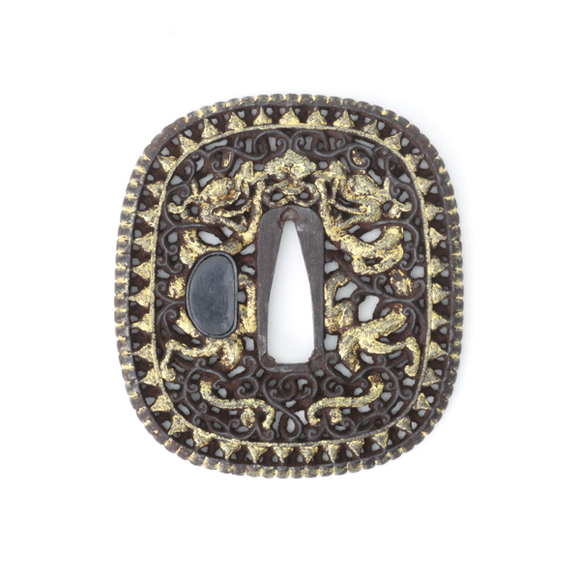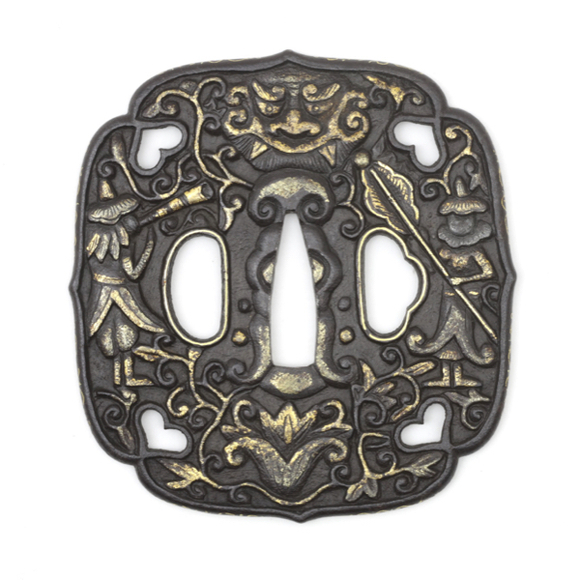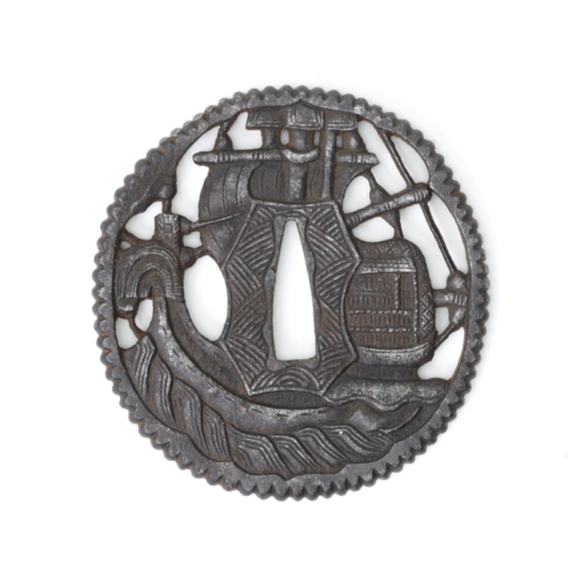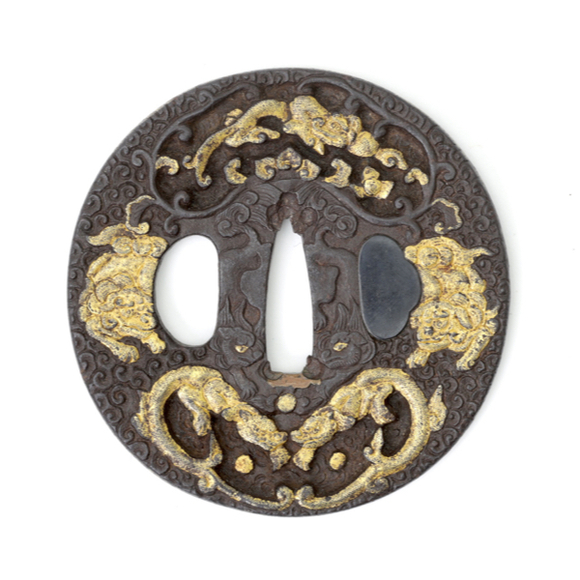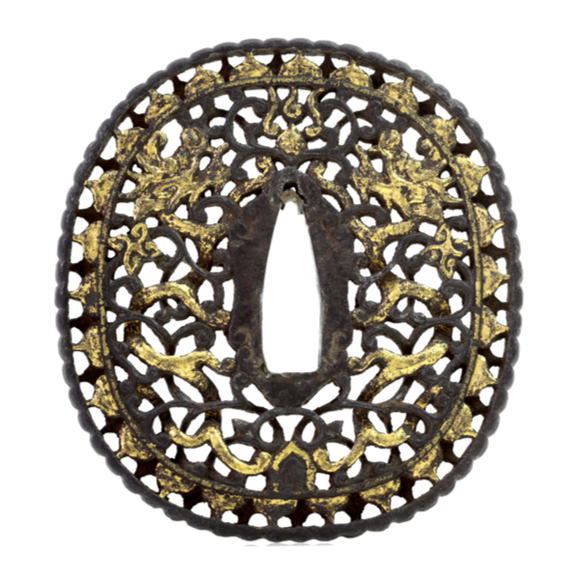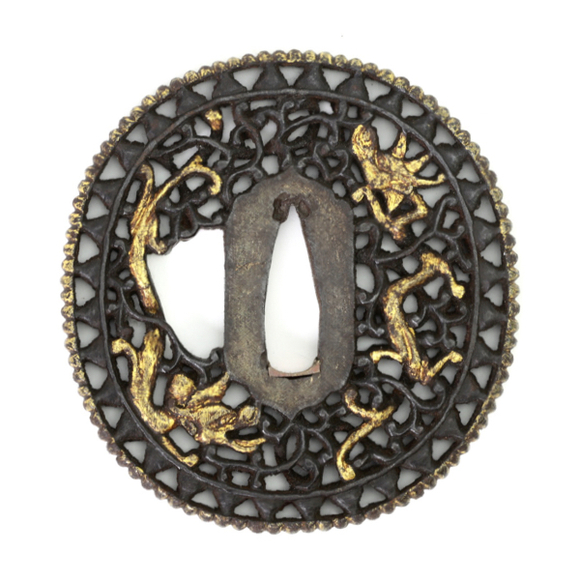Of pierced iron, elaborately cut with lotus petal border.

75 x 70 x 5.4 mm
93 grams
Iron, gold, shakudō, copper
Canton, China
For the Japanese market
18th century
Introduction
Among Nanban tsuba there is a genre that is best described as "Asian export sword guards," and among those, there is a distinct group that was made in China, for the Japanese market. The production center was most likely Canton.
For more information, see my article: Nanban tsuba, a Canton group.
This example
An unusual example. It diverges from the typical Canton-made tsuba in that it has a conventional-shaped seppa-dai. This time it is carved with abstract wave designs of a style also often seen on sawasa wares, luxury goods produced mainly for the Dutch VOC expats in Asia.
The main design has an openwork are with seven areas of undercutting. It contains a carp, gate, and a dragon. It is the story of a carp that swims upstream and upon passing the mythical dragon gate, he turns into a dragon. It is a story of perseverance, often linked to passing the imperial Chinese exams.1
It has a double rim, the outside of which is beaded. Between the two rims are 28 compartments, each holding a small iron ball. The back sides of each compartment are closed, so that half face one side and the other face the other. The are overlaid with gold with patterns of lines, the meaning of which eludes me.
One hitsu-ana appears to be incorporated into the design from the beginning, a second was opened later and lined with the prized shakudō, a copper-gold alloy patinated to a "raven black".
Notes
1. James L. McElhinney; Dragon Gate Tsuba. Connoisseurs Notebook, 2017. The article illustrated this piece as well.
Comparable examples
A very similar example was in the famous Hawkshaw collection, described by Henry Joly.

"386. Iron, beaded edge, with a border of thirty-seven hollow
beads, containing small iron balls.
Dragon, shachihoko, carp and temple, as well as border, gilt nunomé.
XVIII"
(18th century.)
From: Henri L. Joly; Sword-mounts a descriptive catalogue of the collection of J. C. Hawkshaw.
Another, very interesting one, shows a crossover between this design, now with 35 compartments, and the famous Yagami "thousand monkeys" design:

Source: blog.goo.ne.jp
The Yagami school was located in a suburb of Nagasaki, and imported designs strongly influenced them. However, the monkey design is thought to have been exclusively theirs, a design invented by Mitsuhiro and perfected by his younger brother Mitsuhiro II.
This puzzling crossover is then perhaps made by a Yagami school maker, combining their monkey designs with the jewel compartment border. Notice the smooth rim, while the Chinese-made ones both have beaded rims.




Unusual tsuba with foreign figures and Chinese auspicious symbols.
In the style of northern work of the 16th and 17th centuries

